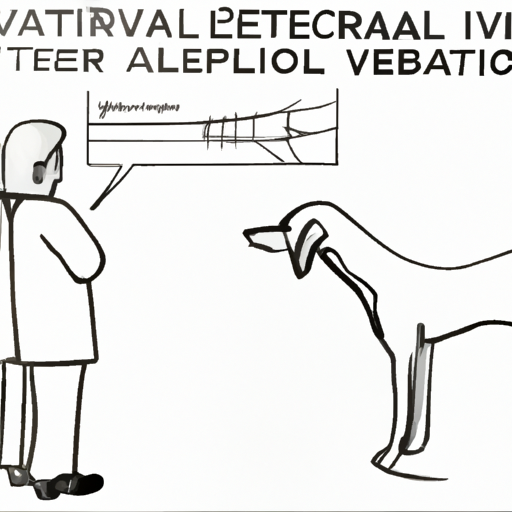Understanding Limp Tail
Hello, dear caregiver! Are you aware of the term ‘limp tail’? This is a condition that can afflict your furry friend causing their tail to hang down limply, rather than its usual perky self. It’s also known as ‘swimmer’s tail,’ ‘cold water tail,’ or ‘dead tail.’ It’s a condition that typically occurs due to overexertion, prolonged swimming, or exposure to cold weather. Being knowledgeable about it can help you provide the best care for your canine companion.
Recognizing the Symptoms
Your dog cannot verbally express its discomfort, so it’s up to you to look for signs that something is amiss. Here are the common symptoms of limp tail:
- A tail hanging down limply from the base
- Swelling at the base of the tail
- Difficulty sitting
- Lethargic behavior
Your dog might also show signs of pain when the tail is touched. It’s essential to seek veterinary help as soon as these symptoms are spotted.
The Treatment Process
The good news is, limp tail is typically a temporary condition, and with the right care, your dog should recover within a week or two. Here’s what the treatment process usually involves:
- Rest: Ensure your dog gets ample rest. This is crucial for recovery.
- Medication: Your vet may prescribe anti-inflammatory medicines to reduce swelling and pain.
- Warm Packs: Applying warm packs to the base of the tail can provide relief.
- Physical Therapy: Gentle exercises might be recommended by your vet to help your dog regain its tail strength.
Remember, every dog is unique, and what works for one may not work for another. Always follow your vet’s advice.
Preventive Measures
Prevention, as they say, is better than cure. Here are some steps you can take to prevent limp tail in your dog:
- Limit Swimming: If your dog loves swimming, make sure it’s not overdoing it.
- Proper Warm-up and Cool-down: Just like humans, dogs too need to warm up before rigorous exercise and cool down afterwards.
When to Seek Veterinary Help
You might wonder when it’s time to seek professional help. If your dog shows any of the above-mentioned symptoms and they persist for over 24 hours, it’s time to consult a vet. Also, if your dog’s tail doesn’t improve after a week of home treatment, professional help should be sought.
Frequently Asked Questions
Q: Can limp tail lead to permanent damage?
A: In most cases, no. But if the tail doesn’t recover within a few weeks, it’s best to consult a vet.
Q: Is limp tail a sign of a more serious condition?
A: Not usually, but persistent symptoms should be checked out to rule out other issues.
Q: Can all breeds of dogs get limp tail?
A: While it’s more common in certain breeds, any dog can get limp tail.
Q: How can I comfort my dog during this time?
A: Provide a warm, comfortable space for your dog to rest and try to limit its physical activity.
Remember, as caregivers, our goal is to ensure our furry friends lead happy, healthy lives. Stay informed, stay vigilant!



